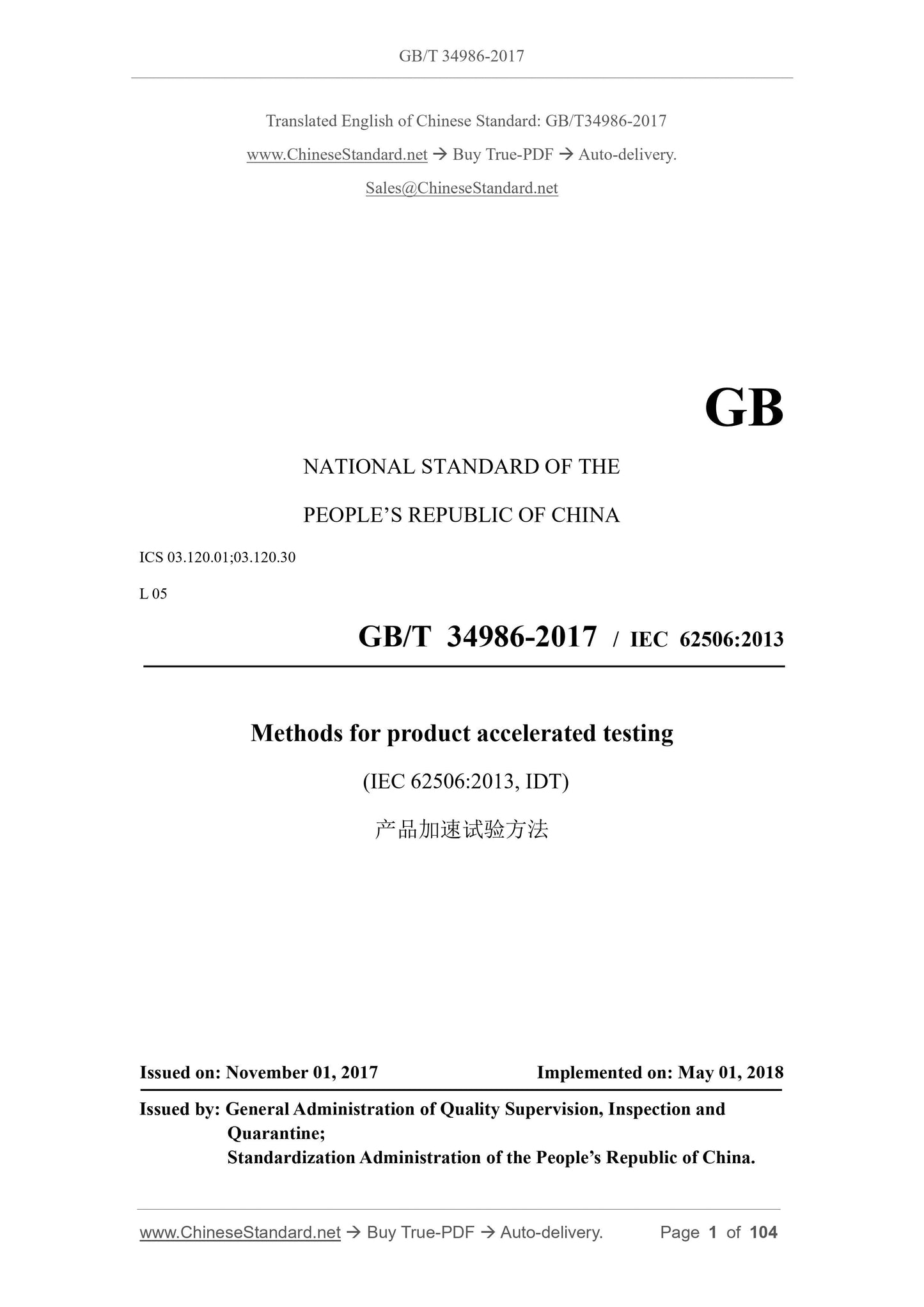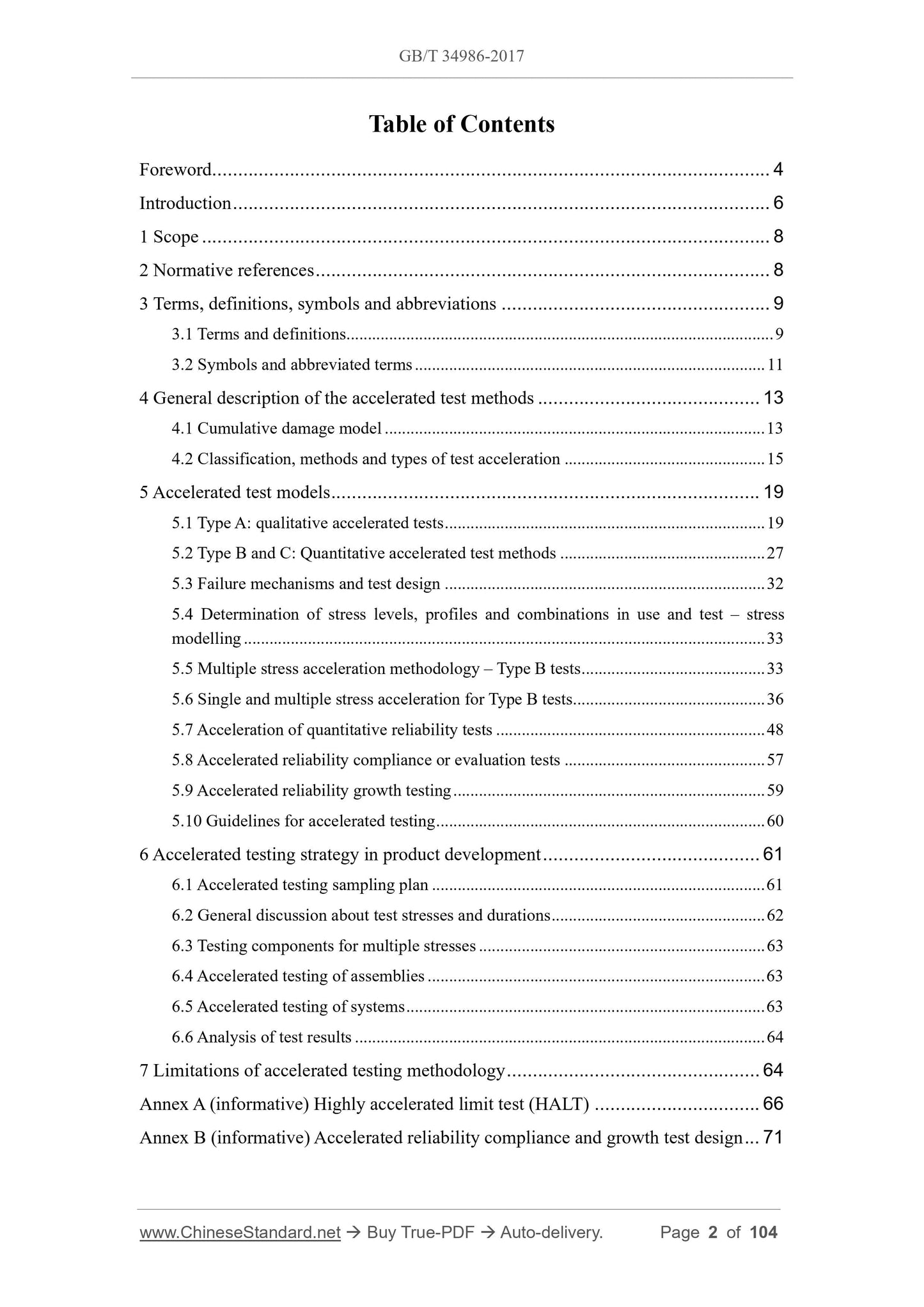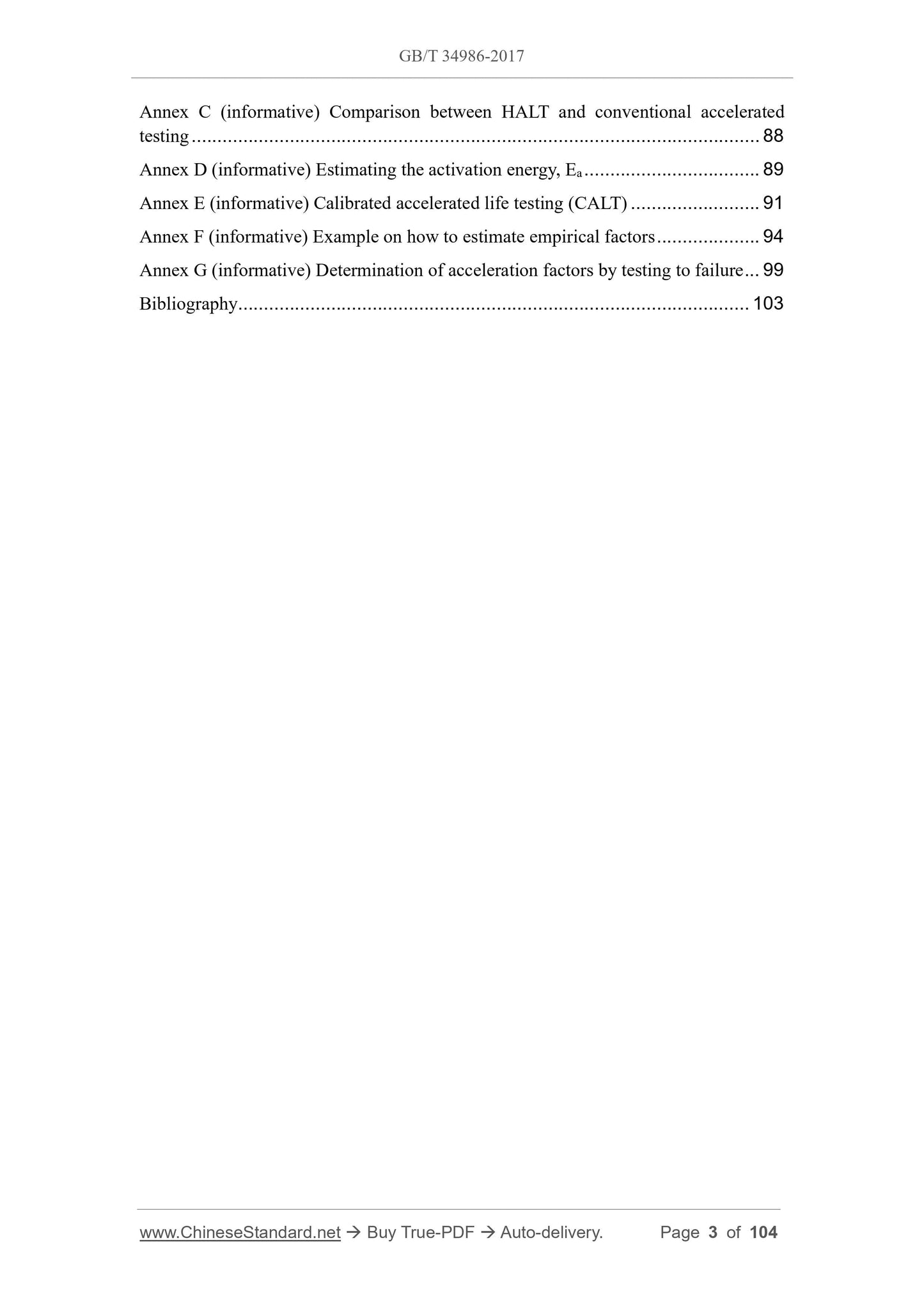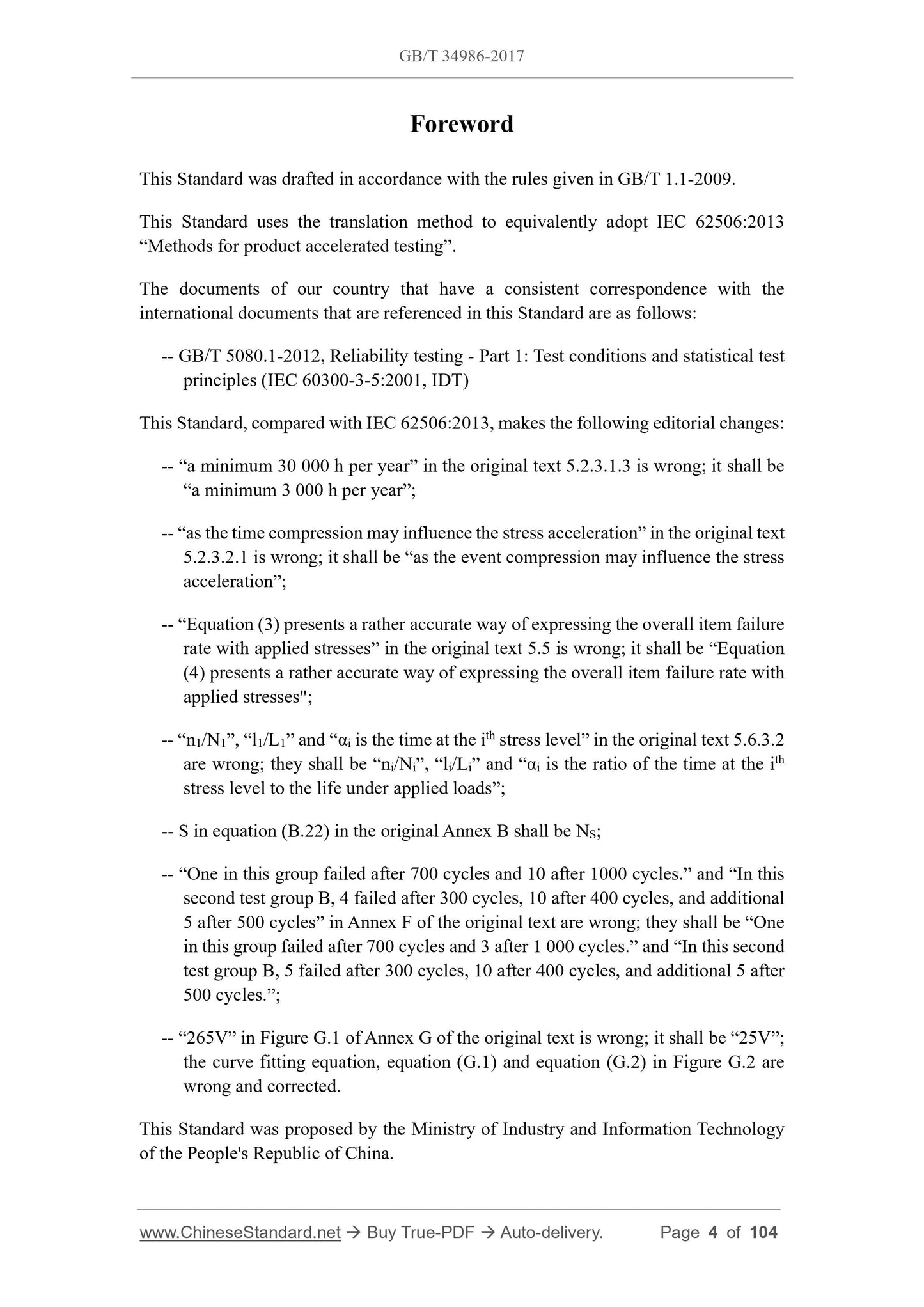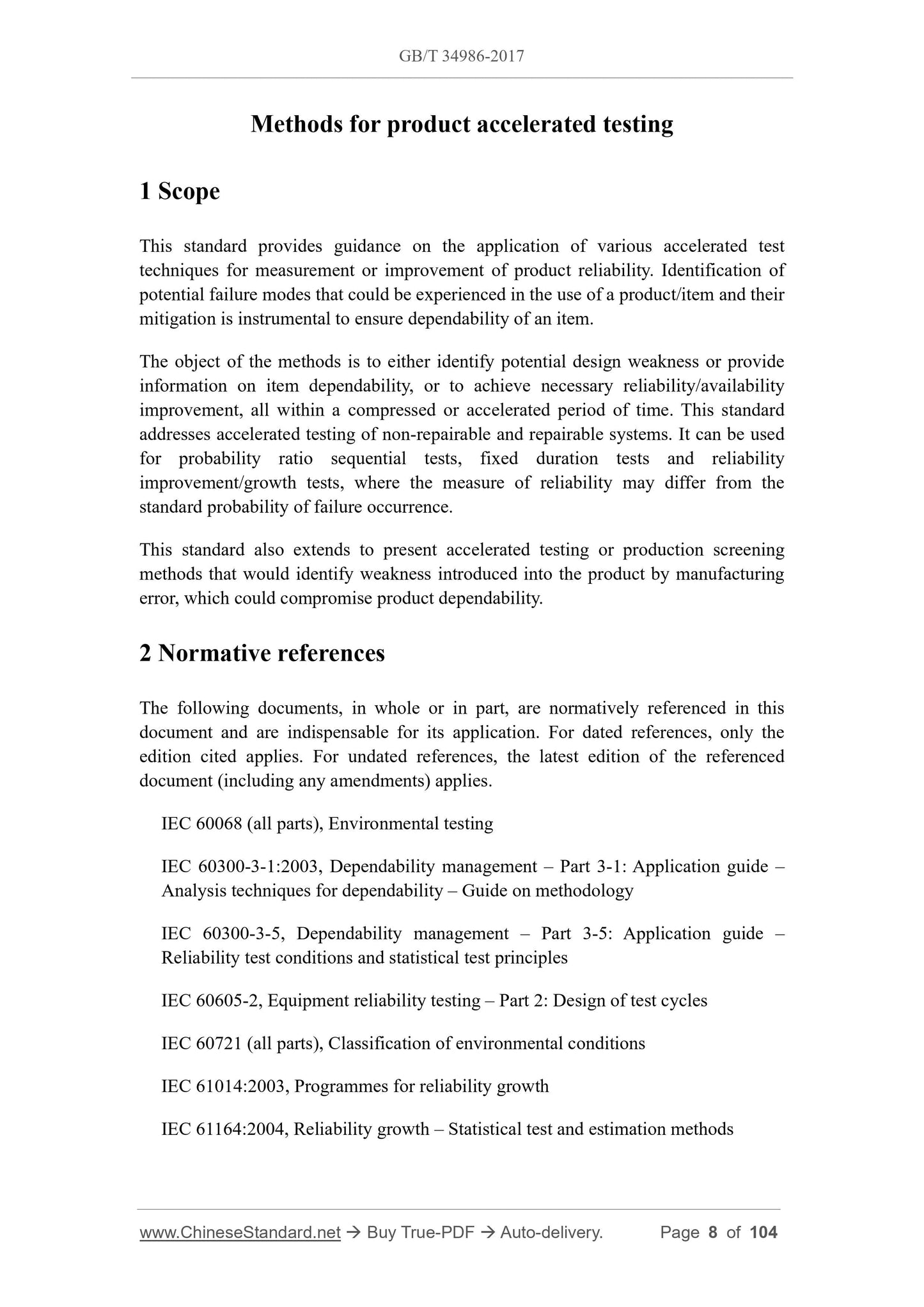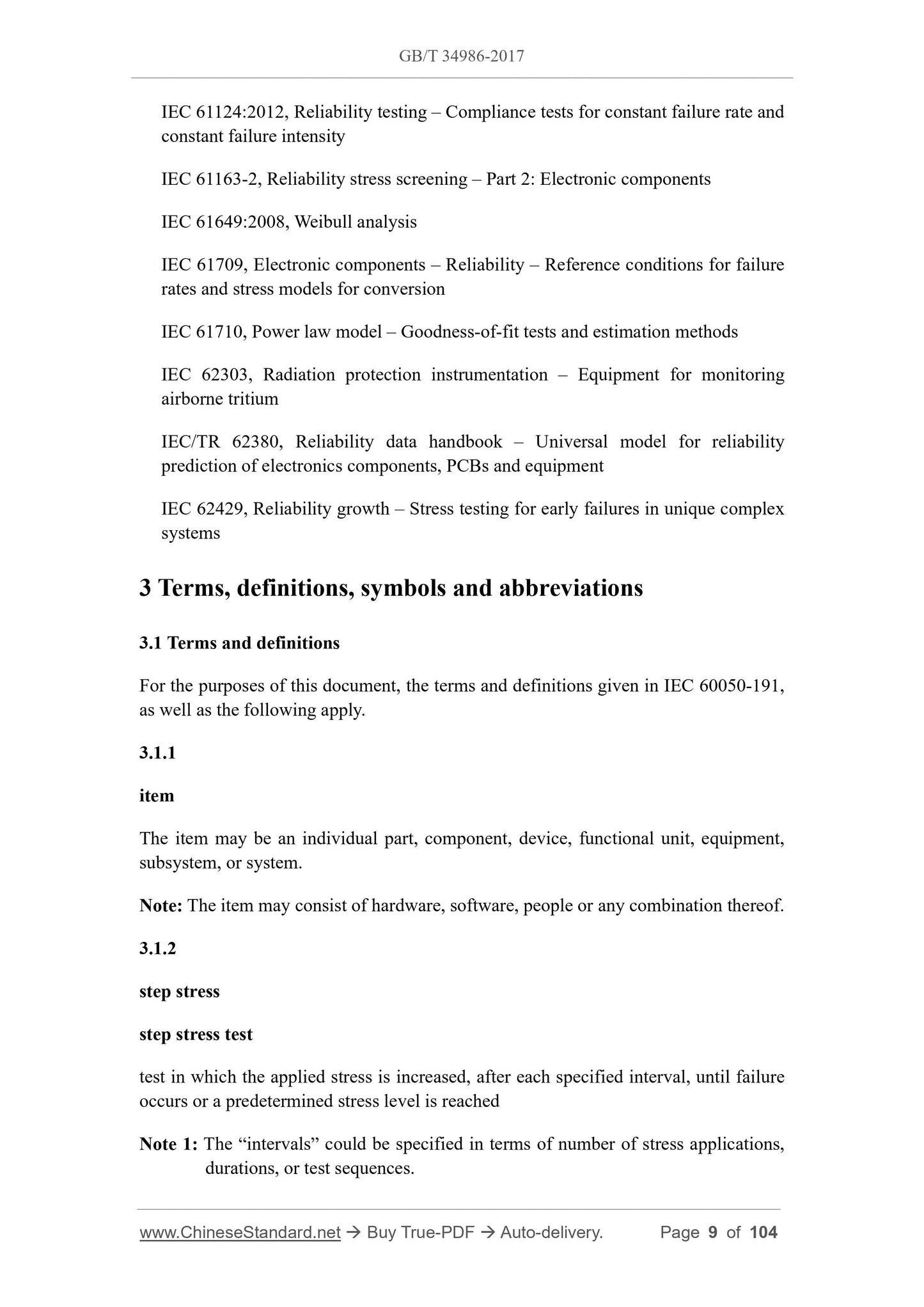1
/
of
6
www.ChineseStandard.us -- Field Test Asia Pte. Ltd.
GB/T 34986-2017 English PDF (GB/T34986-2017)
GB/T 34986-2017 English PDF (GB/T34986-2017)
Regular price
$995.00
Regular price
Sale price
$995.00
Unit price
/
per
Shipping calculated at checkout.
Couldn't load pickup availability
GB/T 34986-2017: Methods for product accelerated testing
Delivery: 9 seconds. Download (and Email) true-PDF + Invoice.Get Quotation: Click GB/T 34986-2017 (Self-service in 1-minute)
Newer / historical versions: GB/T 34986-2017
Preview True-PDF
Scope
This standard provides guidance on the application of various accelerated testtechniques for measurement or improvement of product reliability. Identification of
potential failure modes that could be experienced in the use of a product/item and their
mitigation is instrumental to ensure dependability of an item.
Basic Data
| Standard ID | GB/T 34986-2017 (GB/T34986-2017) |
| Description (Translated English) | Methods for product accelerated testing |
| Sector / Industry | National Standard (Recommended) |
| Classification of Chinese Standard | L05 |
| Classification of International Standard | 03.120.01; 03.120.30 |
| Word Count Estimation | 74,767 |
| Date of Issue | 2017-11-01 |
| Date of Implementation | 2018-05-01 |
| Regulation (derived from) | National Standard Announcement 2017 No. 29 |
| Issuing agency(ies) | General Administration of Quality Supervision, Inspection and Quarantine of the People's Republic of China, Standardization Administration of the People's Republic of China |
Share
